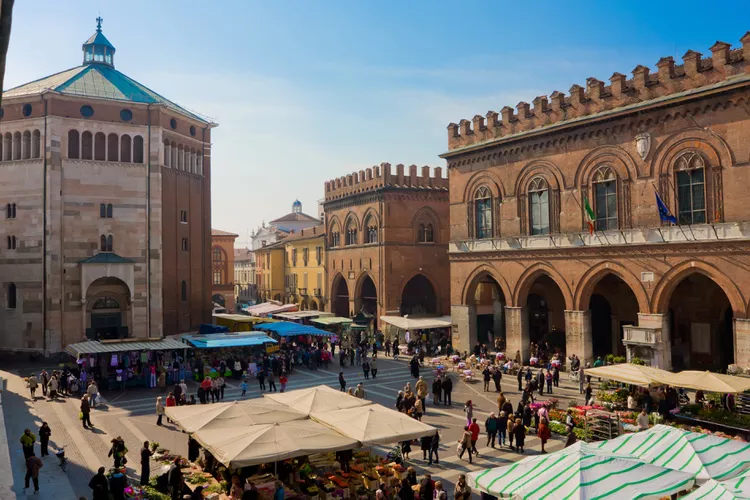Summary
Cremona: A Jewel of Northern Italy
Cremona is a beautiful city in northern Italy renowned for its exceptional violin production. With a picturesque historic center, most attractions are located around the main square, Piazza del Comune, making it a perfect destination for day trips or longer stays from Milan.
Cremona Location
Nestled within the Lombardy region of northern Italy, Cremona is positioned on the Po River, approximately 85 kilometers southeast of Milan. Surrounding cities such as Brescia, Pavia, and Mantova add to the allure of exploring Lombardy.
How to Get to Cremona
Reaching Cremona is convenient, with direct train services from Milan that take about one hour. Alternatively, if traveling by car, it’s easily accessible via the A21 autostrada. Just before entering the city center, you will find a large parking lot, available for free at the time of writing. Both the train station and parking area are a short walk into the city’s heart. The closest airports include Milan Linate, Parma, and Bergamo.
Where to Stay in Cremona
For accommodation options in Cremona:
- Hotel Impero: A 4-star hotel located about 50 meters from the Cathedral, providing comfort and convenience.
- Hotel Astoria: This 3-star hotel is situated near Piazza del Comune, placing guests in the midst of the action.
- Albergo Visconti: Located outside the historic center, this 3-star hotel offers bicycles for guests, perfect for cycling around town.
What to See in Cremona
Most of the city’s prominent attractions are centered around Piazza del Comune:
- Torrazzo: The bell tower of the Cathedral, known as Torrazzo, is the second tallest brick tower in Europe. Completed in 1309, it stands at an impressive 112.7 meters (343.5 feet) and houses the world’s largest astronomical clock. Climbing the tower offers breathtaking views, although it is currently closed for renovation as of 2014.
- Cathedral and Baptistery: This early 12th-century Romanesque cathedral showcases Gothic and Baroque elements with a striking facade adorned with sculptures. Inside, visitors can find exquisite frescoes ranging from the 14th to the 16th centuries. The octagonal Baptistery features Romanesque architecture with a 16th-century baptismal font and a wooden crucifix from the 14th century.
- Palazzo Comunale: The town hall built in the early 13th century is adorned with Renaissance frescoes and features decorated rooms and an exhibit of string instruments.
- Loggia dei Militi: This structure, dating back to the 13th century, exemplifies Lombard-Gothic architecture and is located on the main square.
- Piazza S Antonio Maria Zaccaria: Behind the cathedral lies a large square where the fish market once thrived, now featuring the Bishop’s Palace, completed in 1817.
- Civic Museum Ala Ponzone-Stradivariano: This museum houses a rich collection of artworks, ceramics, and archaeological finds, alongside a unique section dedicated to the world-famous violin maker Stradivari.
Cremona Music and Violins
Since the 16th century, Cremona has been renowned as a center of music, particularly for its artisan workshops specializing in high-quality stringed instruments. The legacy of Antonio Stradivari, one of the most celebrated luthiers, continues to resonate, with his violins being among the finest in the world. Today, Cremona hosts a luthier school and numerous workshops dedicated to string instrument crafting. For more information, visit Stradivarius Violins.





